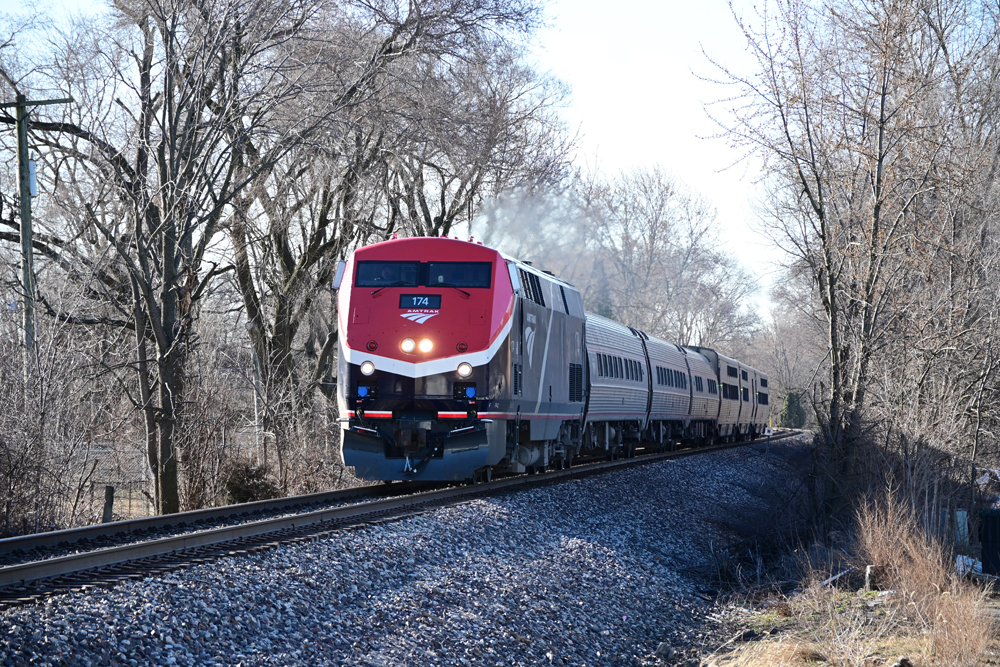
WASHINGTON — There is a lot to unpack in the Federal Railroad Administration’s latest long-distance route update, as discussed at six regional meetings held between June 4-13, 2024.
These were the fourth round of meetings in a planning exercise mandated by a provision of the Infrastructure Investment and Jobs Act of 2021. The latest report ambitiously attempts to move from theoretical lines on a map to practical considerations by developing “conceptual schedules” and categories of costs for 15 routes selected at the last round of workshops [see “FRA releases long-distance study interim report …,” Trains News Wire, Feb. 19, 2024]. A “final” report is to be delivered to Congress later this year; no funding is currently committed to act on the report’s findings.
Costs and benefits
The schedules for once-a-day service are designed to serve the largest population at projected intermediate stations during daylight hours while taking into account arrival and departure times at end points. No actual schedules appear, only ballpark estimates such as “early morning” or “late afternoon,” and schematic maps showing if a stop occurs at night.
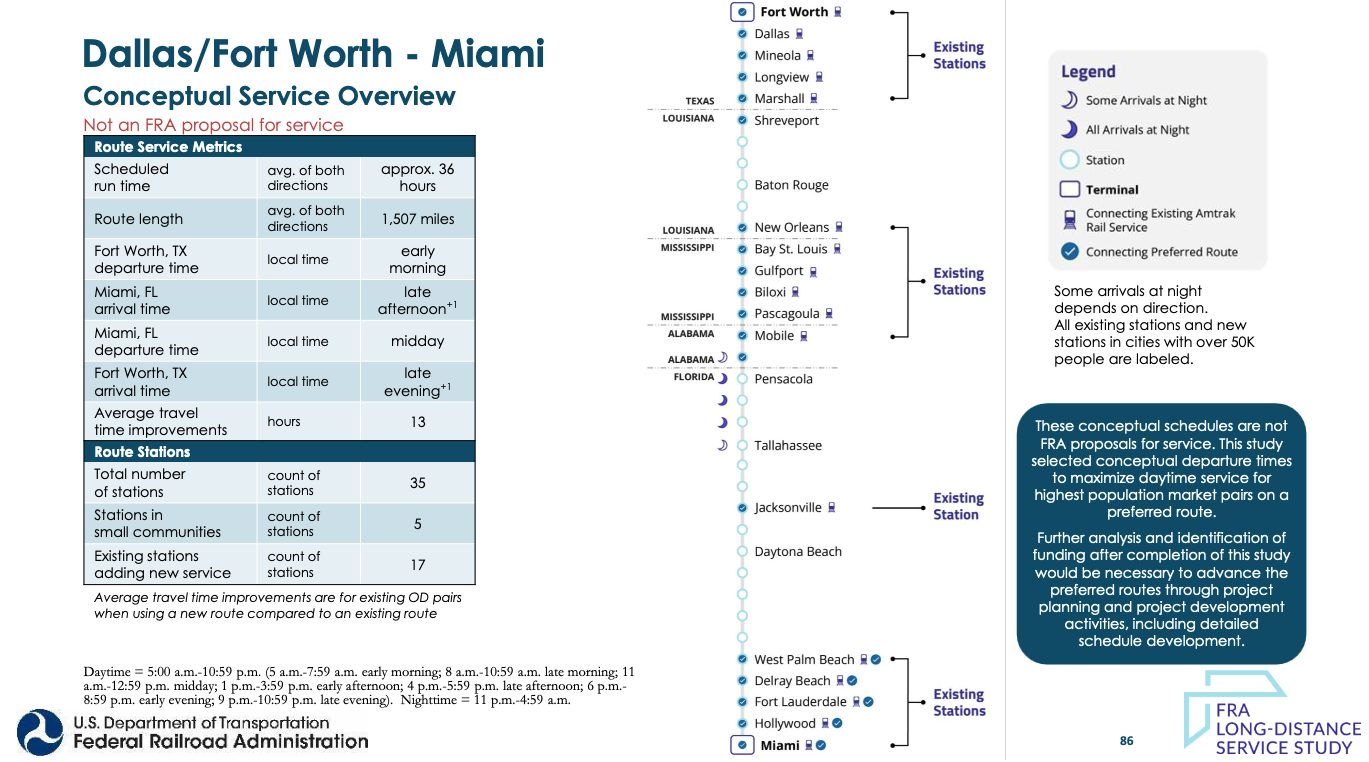
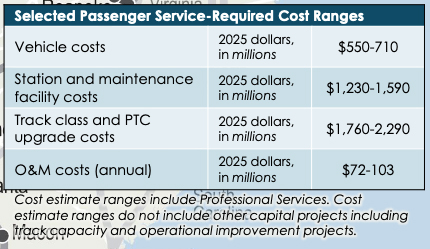
Based on those timings, start-up costs are estimated for each route. These include:
— Cost of upgrading all track to at least Class 4 (79 mph) standards.
— Positive train control installation expense, as needed on segments without PTC.
— Cost of establishing stations and terminals where none currently exist.
— Vehicle cost, the estimated cost of additional equipment needed to operate the service. Multi-level Superliners are projected to be used on all routes except two from Texas destined for New York City.
Annual operating and servicing expense is also estimated by route.
Additionally, public benefits are listed. These include rural population; the number of medical centers, universities, and military installations served; and job creation attributable to the launch of service. No attempt is made to estimate potential ridership and revenue. Those numbers are almost impossible to project because they would depend to a large extent on connectivity to other routes.
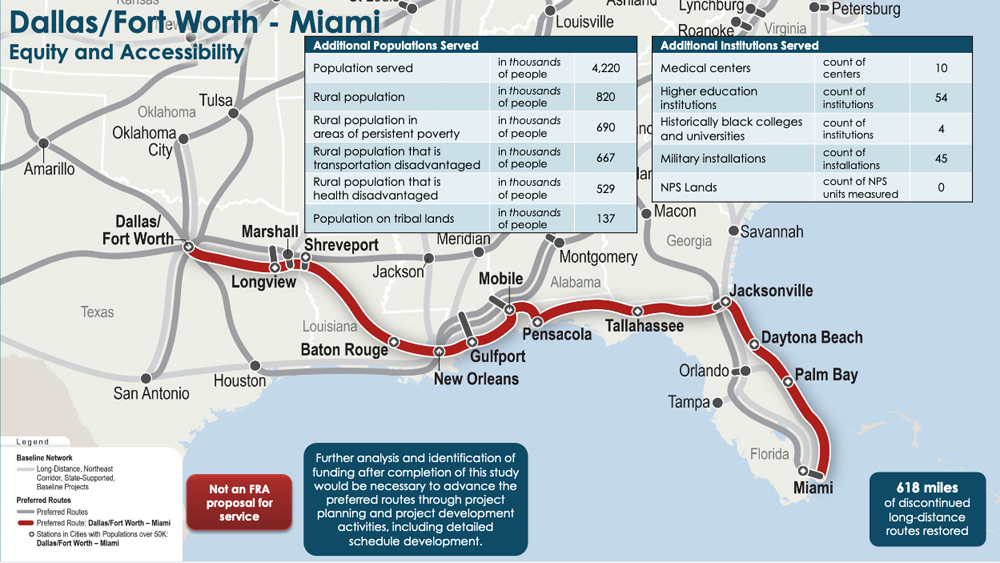
Decision factors
Any quantification attempt of this nature must necessarily rely on equally-applied yardsticks, so each route can be evaluated utilizing standardized criteria.
However, some “one size fits all” assumptions appear to miss the mark, such as assuming all trains will operate with one dining car, a lounge, three sleeping cars, and at least three coaches; “two-night” trains would warrant a fourth coach and a transition sleeper. The only Superliner-equipped Amtrak trains (aside from Auto Train) that currently — or have ever — regularly operated with consists of this size are the Empire Builder, Coast Starlight, and the California Zephyr.
To be sure, the current Amtrak long-distance network suffers from insufficient capacity; even in peak season, the Cardinal carries only two Amfleet II coaches, one Viewliner sleeper, and one Viewliner II baggage-dorm. Certain segments of the train are always sold out, stunting its usefulness and relevance to the communities it serves.
But even assuming the company will be able to acquire the necessary multi-level rolling stock, adding more cars to a route whose ridership wouldn’t require them unnecessarily inflates costs. Building equipment expense into the equation is necessary, but it was one of the factors in a 2009 report Amtrak presented to Congress that killed restoration of the Sunset Limited east of New Orleans after its Hurricane Katrina-induced suspension. (Equipment for new routes will not be addressed by the complicated Request for Proposals currently awaiting responses from Siemens and Alstom; that is designed only to re-equip current operations.)
Setting priorities
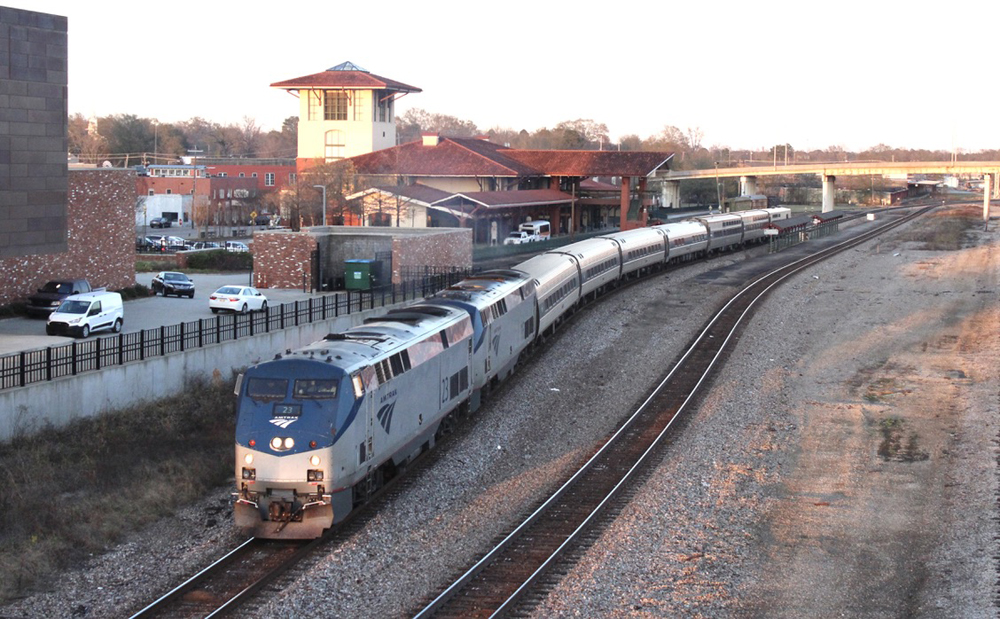
The report’s extensive data sets the stage for prioritizing the routes under consideration, which may or may not be a part of the final report. Adding together an average of each route’s costs for stations, track and signaling, and equipment, Fort Worth-Atlanta via Shreveport, La., and Meridian, Miss., is the cheapest route to implement. This is primarily because it is the shortest (855 miles) and can serve many existing stations currently served by the Texas Eagle, City of New Orleans, and Crescent.
The service modeled, though, is not an extension of the Crescent, which has already been studied enough by Amtrak, the Southern Rail Commission, and the I-20 Corridor Council for those entities and cities along the route to have applied for several federal grants. Instead, the proposed overnight train evaluated here arrives in Atlanta in the morning and departs for Fort Worth in the evening. Running another round trip that would include a Crescent appendage, if money could be found to do that, would give travelers two daily options at stations from Fort Worth to Marshall, Tex., and from Meridian to Atlanta, on nearly 500 miles, or 58% of the route.
At this stage, the report makes no judgment about which routes have the most potential to be implemented. Yet the highest priority has to be elevating the Sunset Limited and Cardinal from tri-weekly to daily status, because the stations and crews are already there and the trains suffer financially from three days of revenue spread across seven days of route costs.
Not studied is an Amtrak plan from 2010 to make the Texas Eagle a daily Chicago-Los Angeles train with a separate New Orleans-San Antonio connection that, as proposed at the time, could have been accomplished with existing Superliner equipment instead of requiring four additional trainsets.
Another dilemma: the fate of prime population centers Amtrak no longer serves like Las Vegas, Nev., Nashville, Tenn., and Columbus, Ohio, are tethered to routes with possible built-in challenges. Columbus is on Detroit-New Orleans and Dallas-New York City routes that would need significant track and signal upgrades nowhere near the Ohio state capital. Nashville, on a key Chicago-Miami route, could be victimized by the thorny issues of finding a suitable station site in Chattanooga, Tenn., and an agreeable Atlanta-Jacksonville, Fla., host railroad.
Key disclaimers like this frequently appear: “Further analysis and funding after completion of this study would be necessary to advance daily Cardinal service through project development activities, including fleet procurement.” Every table notes, in bold lettering on a red background, “Not an FRA proposal for service,” lest any of them are published somewhere without the proper context presented in the entire report.
The latest long-distance study has graduated from “wish list” status by putting numbers against challenges that must be accounted for. The final report promises “preferred route options” that hopefully will also address the financial and political realities necessarily in play with each alternative.








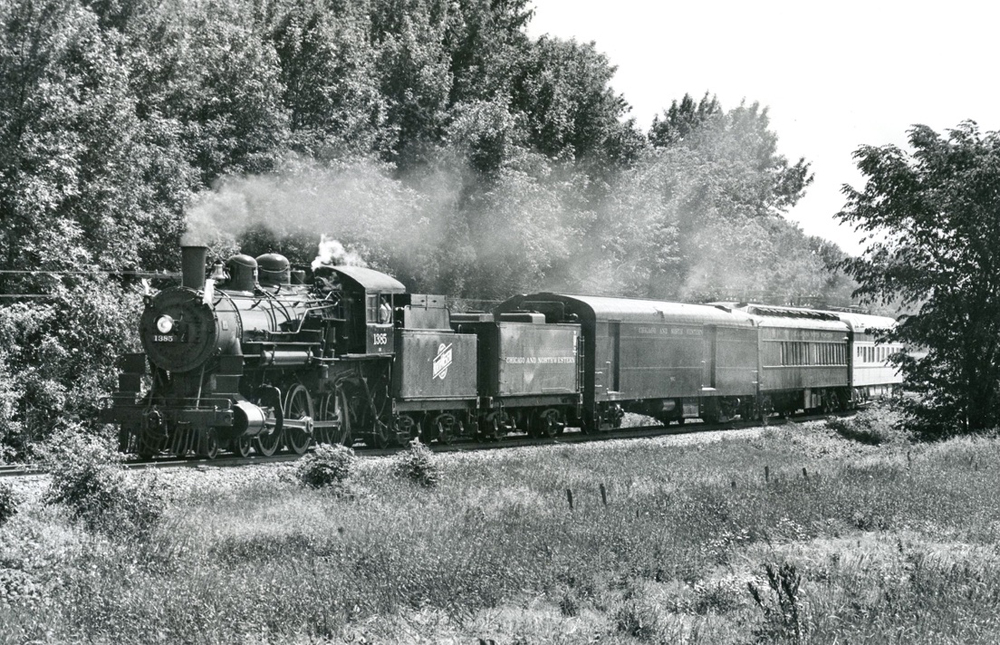
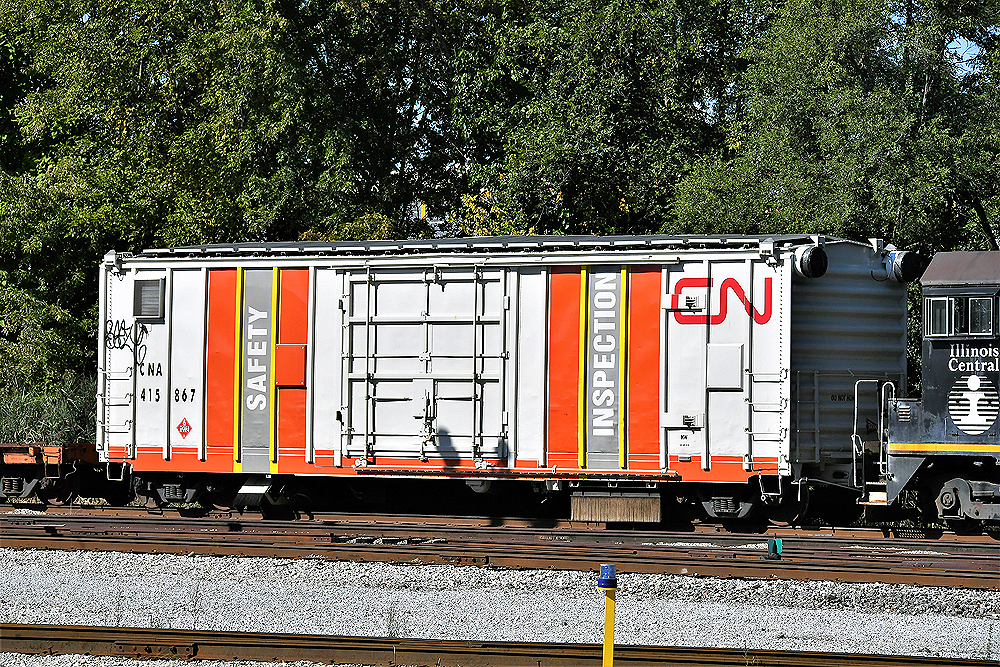




Passenger trains make sense in relatively short, high-density corridors where the cost to expand the highways and airways is prohibitive. The long-distance trains make no sense. They should be abandoned.
In FY23 the adjusted operating loss for the long-distance trains was $596.4 million compared to $563 million in FY22. Except for the Auto Train, which had an adjusted operating profit of $15.6 million in FY23, none of the long-distance trains have come close to covering their adjusted operating expenses. And that fact is not likely to change.
Texas, as an example, has several corridors that could benefit from better passenger train services, i.e., I-35 between DFW and San Antonio, I-10 between Houston and San Antonio, etc. At peak travel times they are chockers with traffic. Driving from San Antonio to DFW during these times frequently means traffic jams in San Marcos, Austin, Round Rock, and Temple, as well as the end point suburbs.
Safe, reliable, timely, comfortable, convenient, and economical trains could pull motorists out of their cars, which appears to be the largest single market for better passenger trains services.
U.S. debt is $34.9 trillion. It is 122.3% of GDP compared to 114.1% at the end of WWII. Just how the proponents of better passenger rail service, whether along existing routes or new routes, proposed to get the money to fund their dreams is a mystery.
How likely will any of these routes really be implemented?
Zero.
Zero or less. Just an excuse to pay bottom feeding consultants more taxpayer money. None of this will ever happen. And it shouldn’t happen. Crayonistas one and all.
If the master plan ever happens the ATL station needs to be relocated, bigger, and equipped to turn the proposed ATL-FTW train and fully service the proposed HOS-NYP and CHI-MIA trains plus the Crescent. As mentioned below, during January-February the Crescent is annulled ATL-NOS during annual NS daytime track maintenance on numerous days. The one storage track at the ATL station is not long enough for two trains. The Jan-Feb track maint. may also impact the ATL-FTW train when all the freights are being run at night. Turning that train at Meridian doesn’t make sense without any connections East.
All told, given the estimates in the study, the total cost for the 15 routes would be $53 billion. But not all routes are the same. The shortest route is Fort Worth-Atlanta at 855 miles, with Seattle-Chicago the longest at 2,314 miles. The average length is 1,548 miles. Still, there is one route that is that absolute standout bar none. The Denver-Minneapolis/St. Paul route is the third-shortest at 1,143 miles, its total implementation cost (rolling stock + stations + track/mechanical) is a whopping $7.15 billion, $1.9 billion more than the next most-expensive route, Dallas-New York, at $5.25 billion. But since the Denver-Minneapolis/St. Paul route is relatively short, its obscene cost comes to light: The cost per mile is $6.26 million, more than double that of the next most-expensive route, Detroit-New Orleans at $2.94 million per mile. While this part of the study is far from the last word on anything, the huge cost of Denver-Minneapolis/St. Paul route should mean that it’s the first to be relegated to File 13. (Much of the route is lightly-trafficked branch lines, including all 520 miles across South Dakota, dark territory with current track speeds varying between 10 and 40 MPH. The study based the cost on upgrading all the routes to a 79 MPH railroad.)
The study assigned relatively standard costs to the routes, including train consists based a projected schedule (not a specific schedule, just the number of hours). Three of the trains with the most route miles logged a cost for rolling stock at just under $1 billion. The shortest route, Fort Worth-Atlanta, had the lowest equipment cost at about $.5 billion. In other words, the majority of the cost for all the trains was track and stations, which does prove that the better use of any available funding would be to add more service to existing routes. While equipment costs are fairly constant depending on distance, the bigger costs are track upgrades where currently no passenger trains operate, and creating stations where none exist. Adding trains to existing routes (and making Amtrak long-distance service truly relevant, which it isn’t now) is obviously the better investment since track and station infrastructure upgrades would be relatively minimal.
The Denver – MSP suggestion shows that this series of studies is totally amateur. You can’t run an Amtrak LD over a string of prairie branch lines. No matter the investment. Give a railroad atlas and a sharpie to a classroom of middle schoolers, that’s what this proposal sounds like.
Effective professionals in Wisconsin and Minnesota got us the second CHI – MSP frequency. This FRA study seems like a make-work project for staff who had no other productive work.
It’s nice to see these proposed new routes. However it should be easier to upgrade existing service first. All trains should run daily with full long distance cars, dinning car service, lounge car and enough coach and sleepers to meet average ridership. Too many
long distance trains are running with short consists and are missing increased revenue. The cost to do this would be cheeper as a first step since all the facilities and track upgrades already exist. This also would help proof that long distance trains can do well revenue vs cost on an ongoing basis.
Exactly.
You nailed it Mr. Hull! As for single level equipment nationwide it would result in super long western LD trains. Even now with Superliner equipment the Empire Bldr is running with 10 cars if that were single level it would probably at least 15 cars. Routes that entail two nights travel really require car that can sufficiently accommodate the most psgrs in a more compact space, a single level car would have to accommodate fewer psgs to have sufficient restroom/shower facilities. Longer trains would encourage the RR’s to require more incentives to permit them.
June, 1954 Official Guide shows through NY-SFO and LA cars via PRR & NYC and ATSF, CZ & Overland Route. These required all day in Chicago. B&O had a through Wash-LA sleeper but it went in a later train, B&O 7 Shenandoah arriving Chicago 2.05 PM CST. Return was on B&O 6, Capitol Limited. Rare mileage fans will want to ride the sleeper on the transfer Grand Central-Dearborn.
So there it is single cars (2 cars NYC-ATSF) back when airplanes had round engines and seats were 2×2.
I didn’t see any Detroit-New Orleans service, although you could ride Detroit-Cincy B&O or NYC, change to L&N.
NY-Texas passenger service ran via StL. Both PRR and B&O had sleepers in MoPac colors and PRR had some in Texas Special paint. B&O and MoPac had through Slumbercoaches Wash-San Antonio until 1963. MoPac and B&O returned these cars off lease to Budd who sold them to NP. B&O substituted 16-4 Bird cars as “Slumber Room Coaches.” [Note B&O retained the two 24-8 Slumbercoaches it had bought and continued them in Capitol Limited service.
NEC – Stl ridership witherered on the vine in the 1960’s until there was little ridership left when Amtrak came in. Both the PRR and B&O routes are no longer continuous.
Single-level passenger cars should be applied system wide for flexible equipment deployment. True transcontinental trains between the East and the Pacific coast would be feasible without changing in Chicago or New Orleans.
The proposed circuitous route between Houston and New York leaves much to be desired. Instead of retracing segments already covered by the ‘Sunset Limited’ and ‘Crescent’ via New Orleans and Atlanta, a direct route would be from Houston to Longview, Little Rock, Memphis, Huntsville (Ala), Chattanooga, Knoxville, Bristol (Va), Roanoke, Washington, and New York. A void in east Texas north of Houston and the Tennessee Valley would be filled after more than half a century of no intercity passenger train service. This new train would be equipped similar to the ‘Crescent’ and ‘Silver Meteor’.
I agree with you Penelope. Single level equipment can run systemwide and allow more flexibility for deploying equipment where needed.
1. The study authors early on choose not to use commercial anonymous GPS data to establish the time of day and routing preferences for ground travel but instead used a FHWA aggregation tool (NextGen National Household Travel Survey – National Passenger Origin Destination). I think they are missing some of the longer trips and natural fits like the desire to depart early evening and arrive mid-morning (Boeing Decision Window data).
2. The automobile vehicle-mile conversion estimates are off by a factor of 5-7x it seems as they are only predicting about 20% of riders would switch from automobiles if they are assuming 180 people a train-mile.
3. The routes constructed could be simplified using through cars between trains. I have a feeling that this feels too old school to modern planners but is practiced in Europe, even amongst the rethought offerings like OBB Nightjet.
4. The O&M costs are in the $70-100 per Train-mile range (after vehicle capital) and they have a large number of trainsets figured for each route, with 8 hour layovers and 25% spares. This is way too much relative to European competitive operators.
5. Express isn’t figured anywhere in the planning. It is still a huge market that could be net profitable if the transfer of pallets or semi-trailers is semi-automated.
6. Final nail – It looks like mainline capacity hasn’t been considered. A realistic study is going to need to consider public infrastructure investment supporting higher performing freight & passenger train operations at a level equal to the Interstate Highway gap between fees and public costs. Puling both freight and passenger traffic in spreads the costs out and gets a much higher Benefit-to-Cost (BCA) ratio which is still needed to get public funds. A Public-Private Partnership (P3) analysis was required by the legislation but is missing as of yet.
Perhaps there is a better way to reinvigorate long-distance rail, though I am biased:
https://www.railwayage.com/passenger/intercity/ending-a-50-year-embargo-in-the-fra-amtrak-long-distance-study/
Concerning the proposed route from Ft. Worth to Atlanta, is there any where for that train to layover in Atlanta? One idea would be to extend that train to Charlotte, thereby giving a second train between two large and growing southeast cities. From what I have seen, Charlotte has room for this train to be serviced and layover, plus you could connect with the Piedmonts to Raleigh.
Alexander, excellent suggestion on extending the Dallas-Atlanta train to Charlotte where space and service facilities already exist. There is a place for a Dallas train to layover in Atlanta. There’s a stub ended track next to the main at the Atlanta station that once served a steel business. During the winter when NS does track maintenance between Atlanta and New Orleans, the Crescent terminates during the week. It is turned and backed onto this track for servicing and storage. I’m not sure if there is anything left of Armour Yard. There was a time the train was turned there and Amtrak used the yard for its express business.
Additional routes and trains?!
Anyone associated with Amtrak, at any level, should be devoting all their focus and resources to restoring the current trains/routes to service levels that are expected by the traveling public. Fix the out of service equipment; hire sufficient staff to do so as well as staff the trains; run the Cardinal and Sunset Limited daily. Most importantly, can the current management crew and replace them with people who are passenger railroad savvy.
Ten thumbs up, Ron. May I add, second frequencies on many routes, if not all.
Fifty-three years into Amtrak, a “wish list” for new routes.
If all goes well, best case scenario, some of the younger people reading these pages will see one or two of these routes in their lifetime.
Am I a pessimist, a cynic, a grumpy old man? I’m someone who reads these online articles each day and the print magazine each month. In 1970, Amtrak planners could draw a line between two cities and a train would appear, essentially with no capital cost for infrastructure, only for rolling stock. Now we know that doesn’t happen any more.
To my own post (above), I should add another obvious point. In 1970, Amtrak planners only had to notify a host railroad that the host railroad needed to run a train. This is 2024.